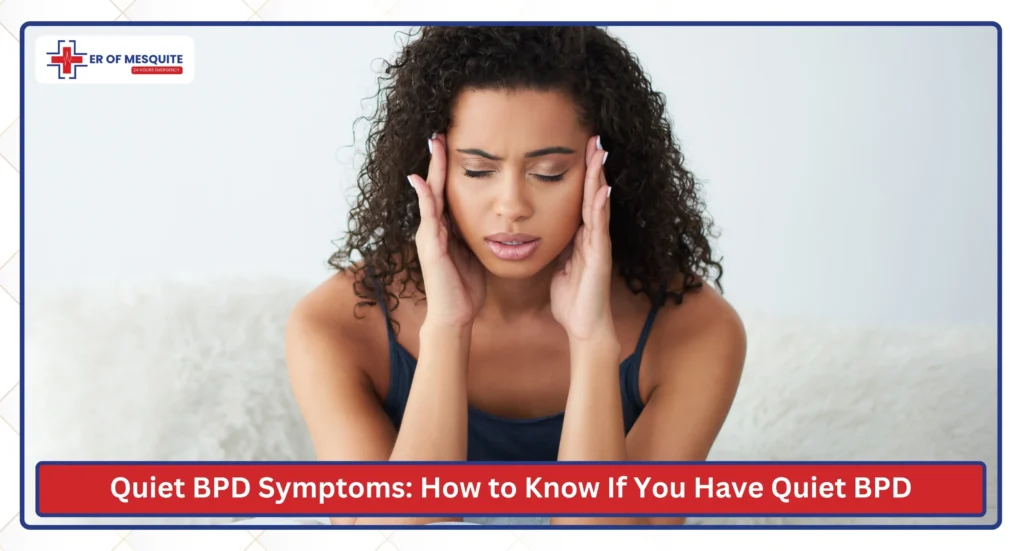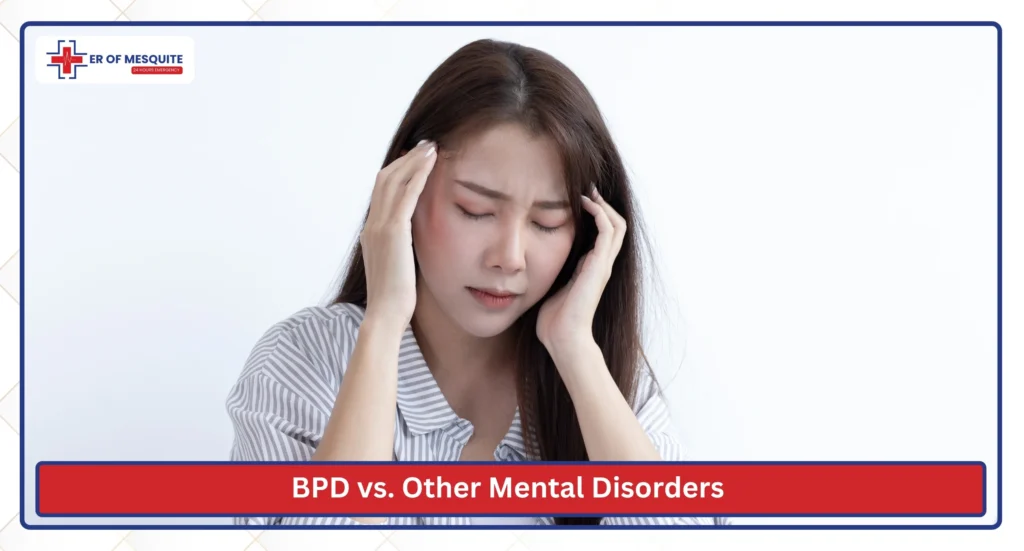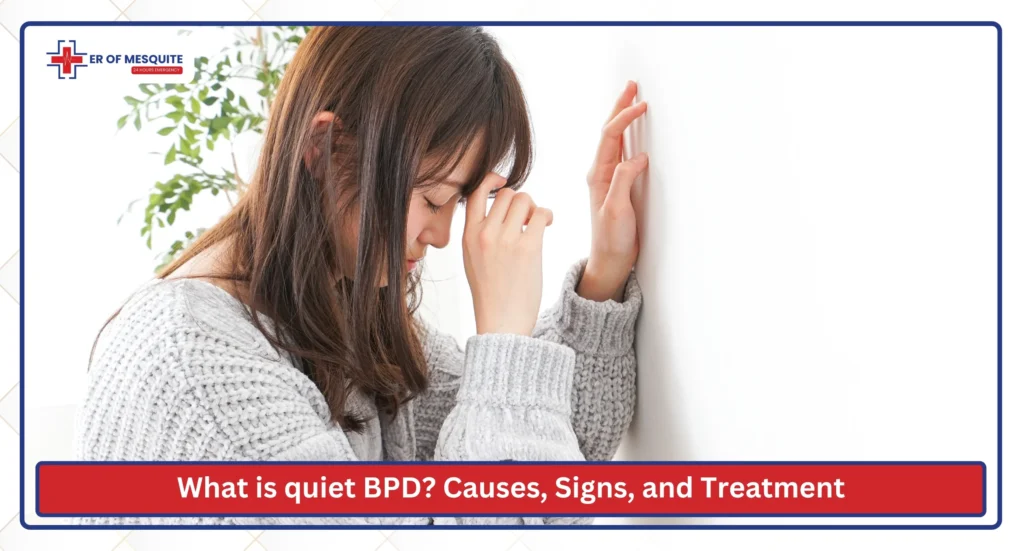Have you and your loved ones ever experienced severe mood swings that go unnoticed by those around you? It may be due to quiet BPD, which is a category of classic borderline personality disorder.
Quiet BPD is described as extreme loneliness and self-criticism without being able to express or burst out about this condition. People suffering from this condition appear normal from the outside, but internally, they are battling with intense mood swings.
What is quiet BPD?
Quiet BPD, also referred to as high-functioning BPD, is a condition similar to BPD, except that the person does not express their emotional challenges and stays calm outwardly. It is characterized by intense loneliness, shame, and self-criticism.
It is a known mental disorder, but if you’re wondering whether “is quiet BPD real?”, then yes, it exists. People often confuse it with DSM-5, but it is different from it, and health experts consider it a serious borderline personality disorder.
Unlike BPD, people in this condition may seem normal and high-functioning from the outside. They often struggle with emotional suppression, self-blaming, and people-pleasing.
Types of BPD
Although the condition of classic BPD differs from quiet BPD, their core symptoms are relatable. It is essential to study different types of BPD so you can spot the difference immediately.
Petulant BPD
In this condition, a person faces passive aggression upon disagreement. They might frequently feel unappreciated and can have manipulative behavior.
Self-Destructive BPD
In this type of BPD condition, a person might have suicidal thoughts often and might sabotage their relationships. They struggle with depression, hopelessness, and extreme self-criticism.
Impulsive BPD
In this type of BPD, people suffer from constant mood swings and seek immediate gratification. Patients with impulsive BPD are abusive, and, unlike quiet BPD, they express their anger more externally.
Quiet BPD
This category is also known as silent borderline personality, and people suffering from it appear high-functioning from the outside but face intense emotional pain and burden internally.
Quiet BPD Symptoms: How to Know If You Have Quiet BPD

Identifying the signs of quiet BPD is difficult, as the individuals suffering from it appear normal and calm from the outside.
Below are a few common quiet BPD traits:
- Extreme self-criticism
- Feeling hopeless often
- Thinking that they are not better than others, known as quiet BPD splitting.
- Avoiding conflict and always pressuring to please others
- Self-isolation and feeling intense shame
Knowing its signs and following a proper treatment is essential, not only to get rid of such a mental condition but also to protect oneself from future illness. This is because constant stress and emotional shifts affect the blood levels and ability to think, rest, and function properly.
If you or your loved ones ever feel a sudden change or discomfort in your bodies, then feel free to visit our fully equipped laboratories at ER of Mesquite, where we offer quick lab test results in a compassionate environment.
Quiet BPD Test
Health professionals make use of surveys, questionnaires, and structured communication sessions to identify the mental position and stability of a person. The quiet BPD test is also taken by screening its traits within a person; however, there is no separate, distinguished quiet BPD test.
Different mental disorders, such as depression, bipolar disorder, and schizophrenia, have different signs and treatment plans. Identifying the accurate problem can help in implementing the right treatment plan.
Quiet BPD Treatment
This type of BPD can be completely treated, and people suffering from it can live their lives normally. Once this condition is identified, it is important to look for the right therapist. At ER of Mesquite, we refer to the right therapist. Simply contact us, and our support team can suggest a suitable therapist to you.
Here is a list of a few treatment options:
- Dialectical Behavior Therapy (DBT) is preferred to treat nearly all types of BPD.
- Cognitive Behavioral Therapy (CBT) is suitable for people who engage in self-criticism.
- Communication and support training
- Medications are needed if the condition includes depression and anxiety attacks.
- Schema Therapy to overcome past traumas
BPD vs. Other Mental Disorders

People often relate borderline personality disorder to other mental disorders due to intense mood swings and impulsive behaviour. Let’s break down the difference between BPD and other mental disorders, such as bipolar disorder and schizophrenia.
BPD vs. Bipolar Disorder
BPD
- Continuous mood swings, events lasting for a few minutes to hours
- It is triggered by emotional distress.
- Face splitting and difficulty in relationships
Bipolar Disorder
- Mood swings that last for months or weeks.
- It is mostly triggered by manic attacks.
- Have less interest in personal activities.
BPD vs. Schizophrenia
BPD
- May feel aggressive under stress.
- Appears during late teens or in adults.
- Can think and function normally even during mood shifts.
Schizophrenia
- They face hallucinations or delusions.
- Appears during the late 30s
- Have difficulty thinking and speaking.
If you feel confused, then the best way to spot the difference is by getting a BPD test, a schizophrenia test, or a bipolar disorder test.
Quiet BPD is Real and Curable

Quiet BPD is hidden but causes serious mental disturbance. It is difficult to diagnose it, as the person suffering from it might seem calm from the outside. With proper knowledge, you can be well aware of its early signs, its impact, and the treatment plan.
Getting it diagnosed with the help of BPD is the first step towards healing it. If you experience such signs, then it is important to contact your healthcare professionals and follow the next steps towards healing.
Frequently Asked Questions (FAQs)
What are the three C’s of BPD?
The three C’s are:
- I didn’t cause it.
- I can’t cure it.
- I can’t control it.
How does a quiet BPD person act?
Such a person seems normal from the outside but suffers from emotional stress internally. They focus on pleasing people more and think they are not good enough like others.
How is BPD triggered?
It is triggered by negative experiences, the absence of emotional validation, extreme stress, and conflicts.





